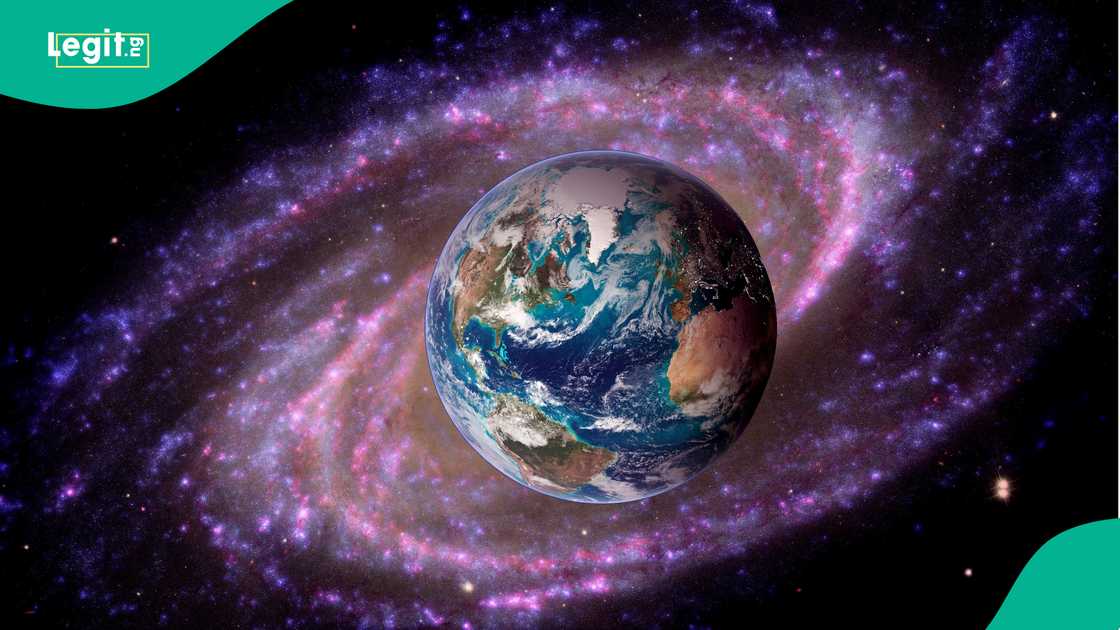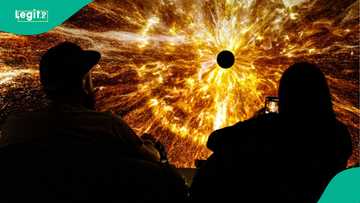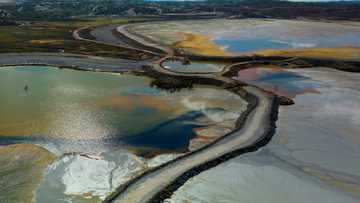New Earth with Conditions Suitable for People Found, Gets Star Similar to Sun, Its Name Released
- Oxford researchers discovered a 'super-Earth' planet named HD 20794 d, which could have conditions suitable for life
- The planet has a mass six times greater than Earth's and orbits within the habitable zone of a star similar to the sun
- Although its elliptical orbit raises uncertainty about hosting life, its proximity to Earth offers hope for future research missions
CHECK OUT: Education is Your Right! Don’t Let Social Norms Hold You Back. Learn Online with LEGIT. Enroll Now!
In a finding published in the journal Astronomy & Astrophysics recently, a 'super-Earth' planet was found outside of the solar system that could have conditions suitable for life.
According to experts at the University of Oxford, the planet known as HD 20794 d has a mass six times greater than Earth's and orbits within the 'habitable zone' of a star similar to the sun.

Source: Getty Images
'Super-Earth' has potential for sustaining water
Located 20 light-years away, scientists believe that HD 20794 d could be at an optimal distance from its nearest star to sustain water on its surface.
Dr Michael Cretignier, a postdoctoral research assistant at the university's physics department, stated:
"Excitingly, its proximity with us means there is hope for future space missions to obtain an image of it."
However, the planet's elliptical orbit, unlike Earth's circular one, has raised uncertainty about its ability to host life.
Discovery and confirmation of 'new Earth'
HD 20794 d was first identified by Dr Cretignier in 2022 after detecting a possible signal while analysing archived data from the High Accuracy Radial Velocity Planet Searcher spectrograph at the La Silla Observatory in Chile.
An international team of researchers then analysed two decades of observations to confirm the planet's discovery.
"For me, it was naturally a huge joy when we could confirm the planet's existence," Dr Cretignier said. "It was also a relief since the original signal was at the edge of the spectrograph's detection limit, so it was hard to be completely convinced at that time if the signal was real or not."
Future research and significance of 'super-Earth'
Dr Cretignier added that HD 20794 d 'could play a pivotal role in future missions' aiming to 'search for biosignatures indicating potential life' on distant planets.
"I'm now very enthusiastic to hear what other scientists can tell us about this newly discovered planet, particularly since it is among the closest Earth-analogues we know about and given its peculiar orbit," he said.

Source: Getty Images
Astrophysicist says research on 'super-Earth' is needed
The discovery of HD 20794 d, located 20 light-years away, has ignited scientific interest, with researchers eager to investigate its potential as an Earth-like world.
A Nigerian astrophysicist, Promise Orolisen, spoke of critical factors that could determine whether the newly discovered exoplanet has the potential to support life.
“HD 20794 d, being an exoplanet orbiting a G-type star similar to the sun, requires further study to solidify its candidacy,” Orolisen told Legit.ng.
According to the astrophysicist, several elements must align for the planet to be habitable.
“We would need to ascertain its position within the habitable zone, mass and composition, the absence of disruptive factors, and signs of water or biological activity,” he stated.
Orolisen also noted that the planet’s large mass - six times that of Earth - could have a significant impact on its environment.
“Its mass could influence gravity, atmospheric composition, internal heat, and heat capacity,” he explained.
'Determining life beyond earth is extremely challenging'
Extragalactic astrophysicist Myles Mckay also weighed in on the challenges of confirming whether the newly discovered exoplanet can support life.
Noting the complexity of such studies, Mckay told Legit.ng that confirming the possibility of life beyond Earth remained an enormous scientific challenge.
“Determining whether a planet or moon hosts life is extremely challenging, and so far, no celestial body beyond Earth has been confirmed to support life.”

Read also
New NASA data shows people all over the world could be living inside a black hole hosting Earth
Despite this, Mckay acknowledged that some planets display promising features.
"Some planets exhibit Earth-like characteristics—such as their host star type, orbital distance, and mass—which can indicate potential habitability,” he added.
List of countries likely to be affected by asteroid
Legit.ng earlier reported that NASA has confirmed the possibility that an asteroid named 2024 YR4 has a 1 in 43 chance, equating to a 2.3% probability of striking Earth in seven years.
The asteroid, which was reported to have measured between 40 and 100 metres wide and was dubbed 'the city destroyer,' passed by Earth at 828,800 kilometres on Christmas 2024.
David Rankin, an engineer with NASA’s Catalina Sky Survey Project, listed potential impact sites on both land and the ocean if 2024 YR4 ended up on a collision course with the planet.
Editorial assistant Ololade Olatimehin provided exclusive commentary from astrophysicists for this report.
Proofreading by James, Ojo Adakole, journalist and copy editor at Legit.ng.
PAY ATTENTION: Сheck out news that is picked exactly for YOU ➡️ find the “Recommended for you” block on the home page and enjoy!
Source: Legit.ng





